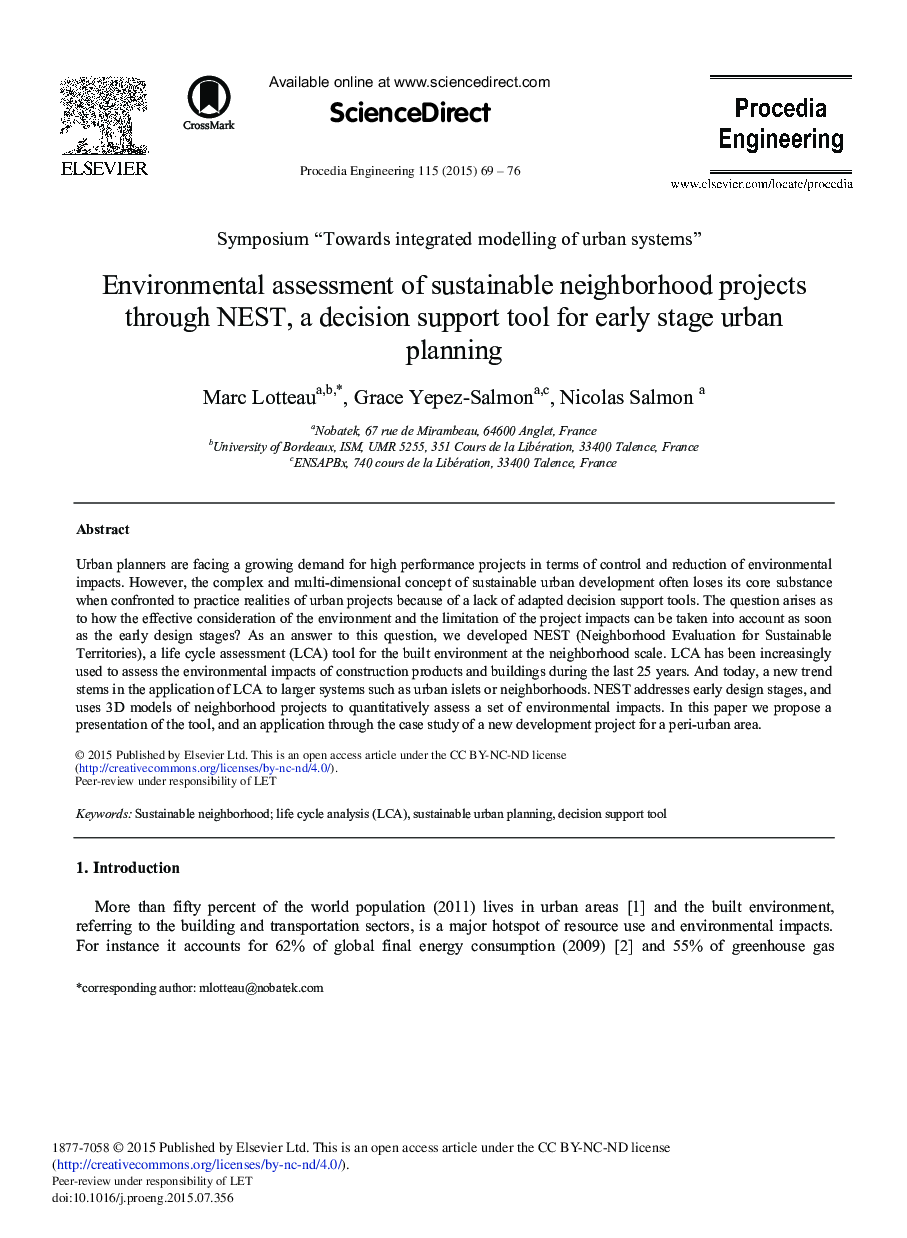| Article ID | Journal | Published Year | Pages | File Type |
|---|---|---|---|---|
| 855471 | Procedia Engineering | 2015 | 8 Pages |
Urban planners are facing a growing demand for high performance projects in terms of control and reduction of environmental impacts. However, the complex and multi-dimensional concept of sustainable urban development often loses its core substance when confronted to practice realities of urban projects because of a lack of adapted decision support tools. The question arises as to how the effective consideration of the environment and the limitation of the project impacts can be taken into account as soon as the early design stages? As an answer to this question, we developed NEST (Neighborhood Evaluation for Sustainable Territories), a life cycle assessment (LCA) tool for the built environment at the neighborhood scale. LCA has been increasingly used to assess the environmental impacts of construction products and buildings during the last 25 years. And today, a new trend stems in the application of LCA to larger systems such as urban islets or neighborhoods. NEST addresses early design stages, and uses 3D models of neighborhood projects to quantitatively assess a set of environmental impacts. In this paper we propose a presentation of the tool, and an application through the case study of a new development project for a peri-urban area.
